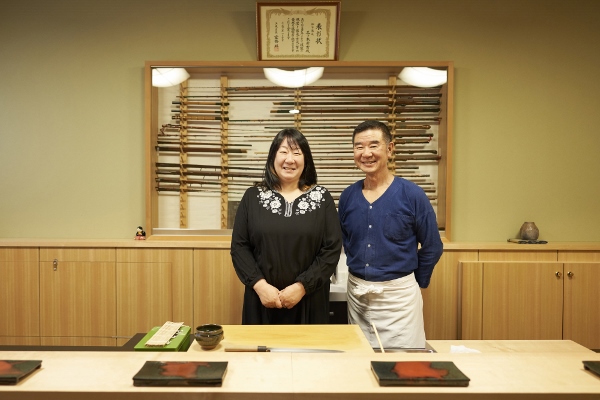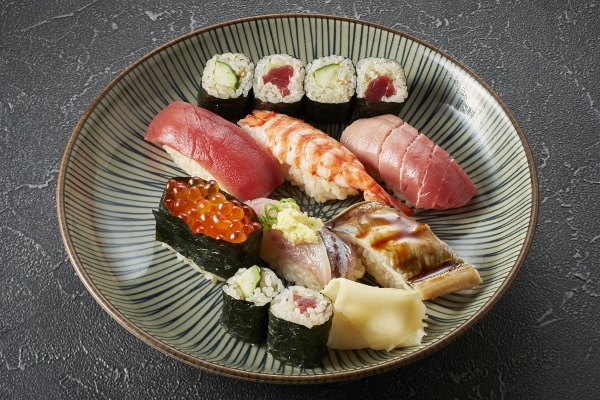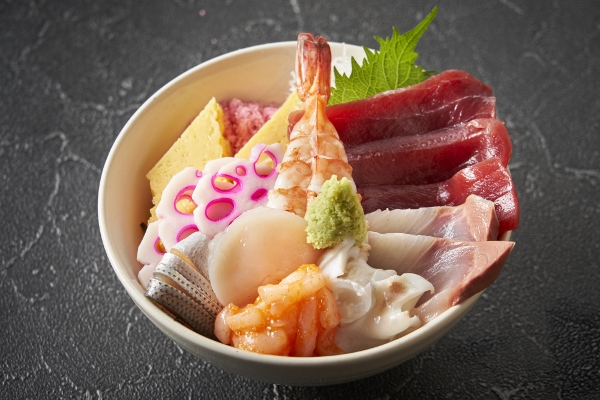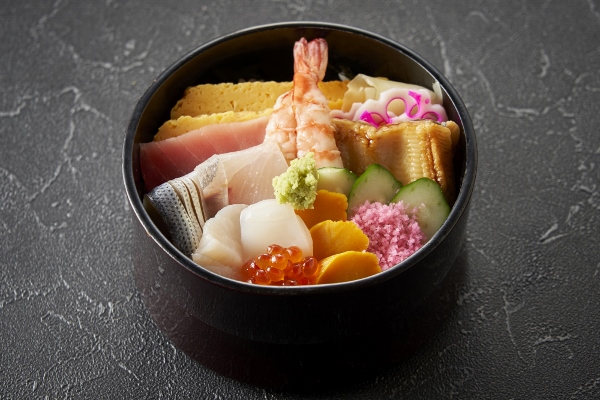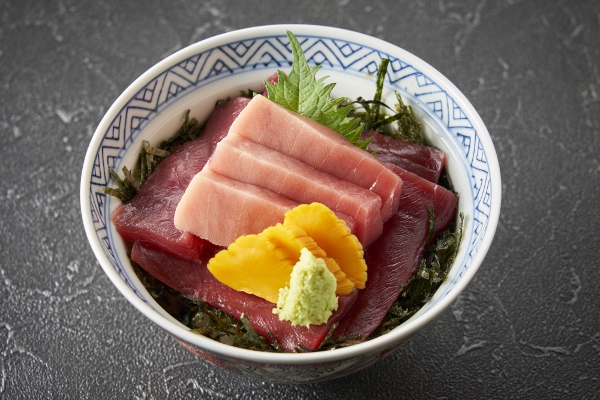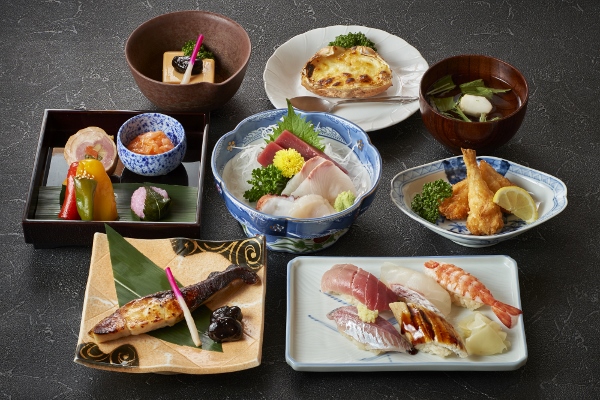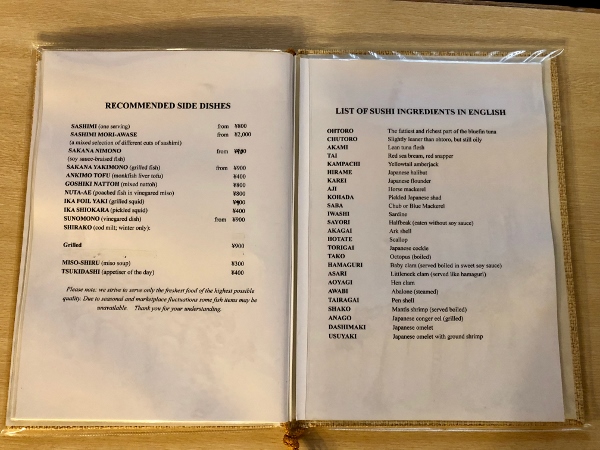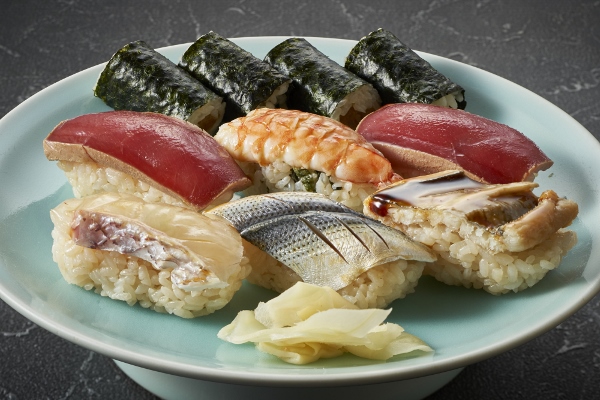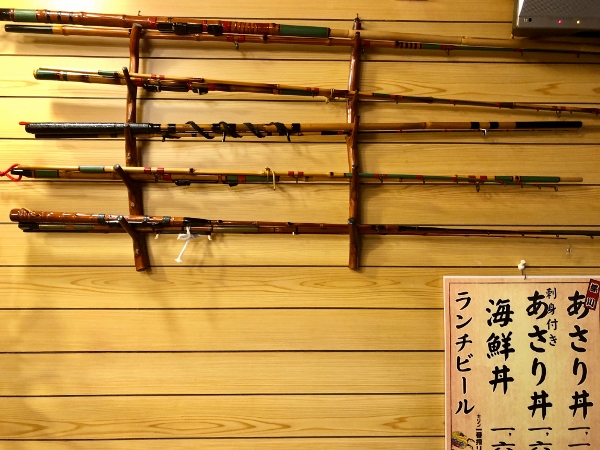Sushi Mitsugi: A Life in Sushi
Published: July 16, 2019
Located on a backstreet just off the approach road to Fukagawa Fudodo near Monzen-nakacho Station, Sushi Mitsugi was founded by its owner Shinkichi Mitsugi in 1970. On a recent sunny afternoon, we dropped in for a chat with Mr. Mitsugi and his charming daughter Maki.
Although the exterior may be somewhat unprepossessing, Mr. Mitsugi is most certainly not; a venerable figure, he has trodden the path of sushi chef since the age of 13. 2020 will mark the 50th anniversary of his restaurant; along the way he has attracted an astonishing variety of customers, revived traditional Edo-mae sushi, written a book, and inspired the main character in a historical novel. Famous not only in Japan, media from the USA, Sweden, Mexico, and Singapore, amongst others, have beaten a path to the restaurant.
Pictured here with daughter Maki, who handles advertising for the restaurant, Mr. Mitsugi is in great demand for seminars and events in the Japanese food world.
This is the nigiri lunch set for one person, which costs 2,000 yen.
“Each piece is made diligently and earnestly, with a pure heart,” says Mr. Mitsugi. It’s a combination of technique, knowledge and experience which underpins the craftsmanship that creates the flavour. “Sushi has to be a balance between the fish and the rice. Neither should overpower the other; there should always be a balance,” he adds.
This is the omakase set, larger than the nigiri set, and costs 3,700 yen. It consists of regular and seasonal fish, so contents may vary depending on the time of year.
This is the kaisen don, a selection of fish and shellfish on a large bowl of sushi rice. It costs 1,600 yen.
While this chirashi is priced at 2,300 yen.
The tekka don, for those who prefer just tuna, is 2,500 yen.
There is even a sushi kaiseki, the traditional Japanese multiple dish dinner, featuring a variety of sashimi, sushi, cooked fish, shellfish, tofu and so on. It’s beautiful and at 6,000 yen per person seems exceptionally reasonable. All fish is sourced from the Toyosu Fish Market in the southern bayside area of Koto Ward.
Have no fear of ordering at Sushi Mitsugi! There’s an immaculately translated English menu which presents the large variety of sushi ingredients and side dishes, as well as instructions on how to order. Of course, customers can order a la carte (okonome de) and without wasabi (saba nuki). The side dishes feature cooked fish too; grilled, braised in soy sauce or poached in vinegared fermented soy bean paste. The popular squid baked in foil is also on the menu.
The signature dish of the Fukagawa area of Koto-ku is Fukagawa-meshi, a bowl of short-necked clams (asari) cooked with long onions (negi) in miso and served on rice. It dates back to the Edo Period (1600-1868) when the Fukagawa area was a fishing village and the local fishermen needed a hearty lunch to see them through the day. The Sushi Mitsugi version of this traditional dish is served over sushi rice with the salty-sweet simmered clams given a quick toasting before being mixed with crispy tempura nubbins and dried seaweed paper. At only 1,000 yen it makes an ideal lunch for those in need of something hot, tasty, and filling.
Mr. Mitsugi is also renowned for his association with what is known as Edo-mae sushi. Briefly, Edo-mae sushi dates back to the early 19th.century in what is now Tokyo and consists of fish or shellfish found in Tokyo bay. While the abundance of seafood in the bay was far greater than today the lack of refrigeration in those days meant it spoiled quickly so sushi vendors had to prepare it in a variety of ways to draw out the flavours and maintain shelf life. The techniques used were marinading, simmering in sauces, steaming and so on. This Edomae Set costs 2,000 and is a collaboration with a well-known vinegar maker. As you can see, the rice portion (shari) is very large, about three times what is used today. It is flavoured with fully matured red vinegar which creates a far stronger and deeper flavour.
While Mr. Mitsugi is a traditionalist, he is also acutely aware that without fresh challenges there is no future. “Creating one’s own traditions is the real pleasure of the craftsman,” he says. Very much an Edokko, the name given to those born and raised in the shitamachi, the old-town area of Tokyo, Mr. Mitsugi is friendly, talkative, amusing, hard-working, ramrod straight, and self-deprecating. Perhaps this is one of the reasons Sushi Mitsugi attracts customers not only from Japan but all over the world. By all accounts, it’s a rare day there are no non-Japanese customers, as the FB site shows ( https://ja-jp.facebook.com/mitsugisushi ). Furthermore, the restaurant attracts many eminent Japanese people such as actors and writers, alongside young couples and regular locals. An interesting mixture, it’s a testament to Mr. Mitsugi’s personality.
Born in the old-town area of Ueno, he grew up fishing for crucian carp in Shinobazu Pond. He began making traditional fishing rods (wazao) as a hobby and now holds a Meister Certification in traditional handicrafts. “It’s a long, slow process,” he says, “the opposite of making sushi. It’s something you can study all your life.”
Many regular customers are employed by corporations and following entreaties from a regular, Mr. Mitsugi decided to open a private room on the second floor. It can accommodate from three to six customers, starting at 10,000 yen per person. Reservations are needed, at least three days in advance. Customers can enjoy a private dinner in the company of Mr. Mitsugi with delicious sushi made before their very eyes.
Story by Stephen Spencer



